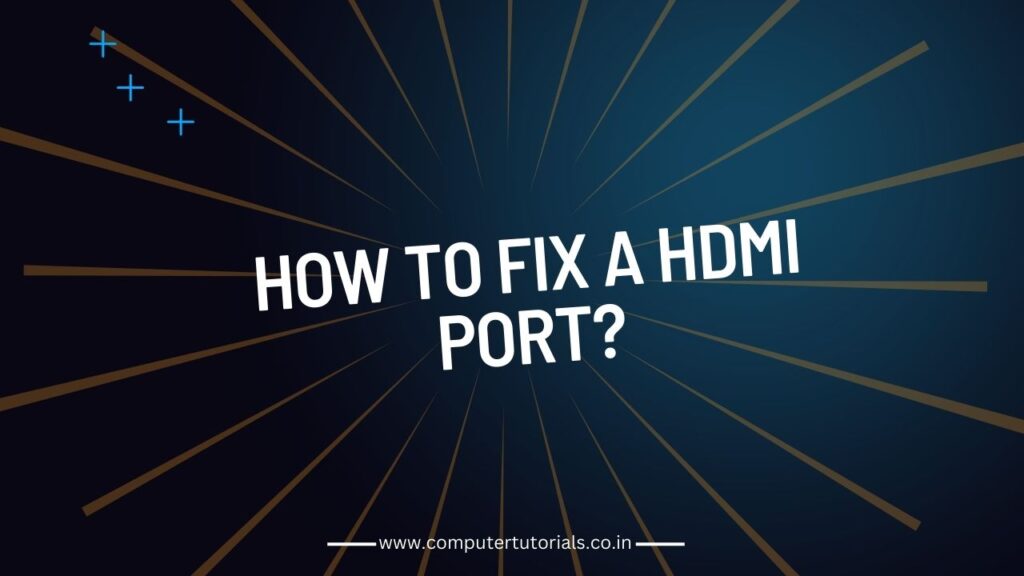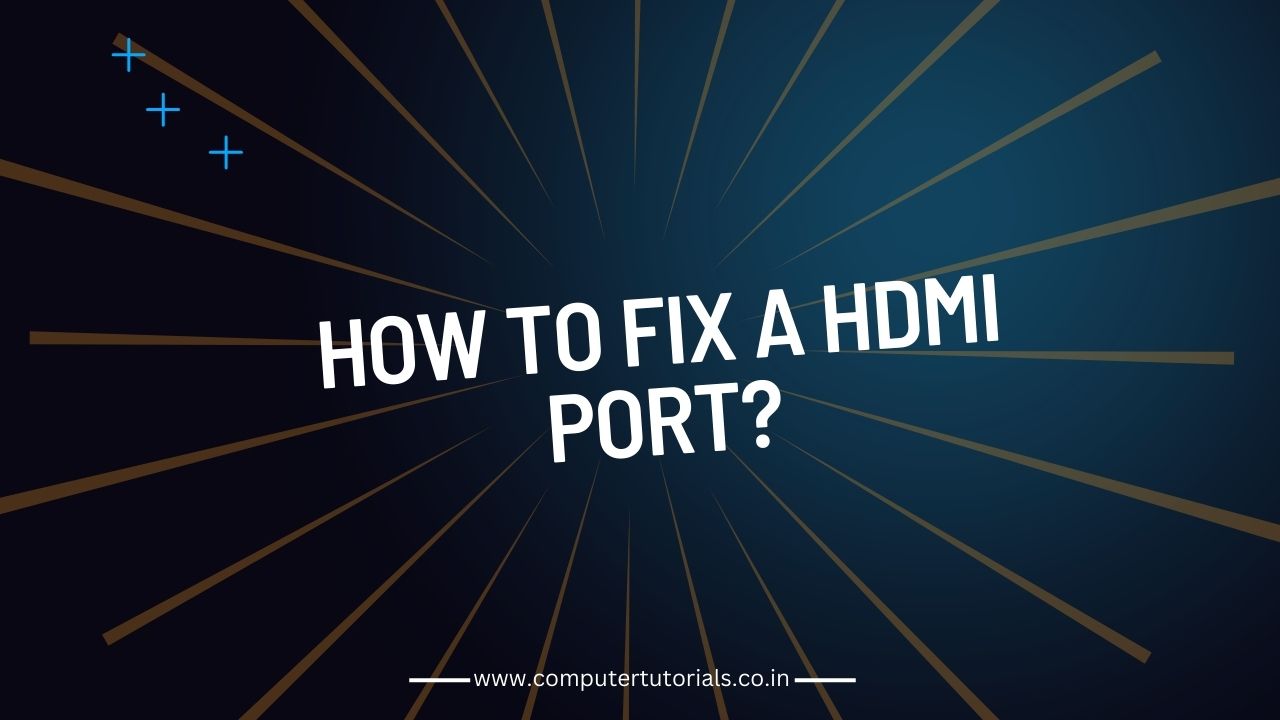In this digital age, HDMI ports have become an essential part of our lives. Whether it’s connecting your laptop to a monitor for work or enjoying your favorite movies on a big screen, HDMI ports play a crucial role in transmitting high-definition audio and video signals. However, encountering issues with your HDMI port can be frustrating. In this comprehensive guide, we will explore the common problems associated with HDMI ports and provide practical solutions on how to fix them.

Introduction
How to Fix a HDMI Port?
HDMI, which stands for High-Definition Multimedia Interface, is a universal connection used for transmitting both video and audio signals between various electronic devices. It has largely replaced older analog standards due to its ability to deliver pristine digital quality. However, even the best technology can encounter problems, so let’s delve into the common issues faced with HDMI ports.
Common HDMI Port Issues
No Signal
One of the most frequent problems users face is the dreaded “No Signal” message on their TV or monitor. This issue often occurs due to loose connections, incorrect input sources, or device compatibility problems.
How to Unlock Keyboard on Dell Laptop?
Poor Image Quality
Sometimes, you might notice that the image on your screen appears distorted, pixelated, or blurry. This can be frustrating when you’re trying to enjoy a high-definition movie or play video games.
Sound but No Picture
In some instances, you may have sound coming from your connected device, but there’s no picture. This issue can be perplexing, as it’s not immediately clear what’s causing it.
Troubleshooting HDMI Problems
Check the Connections
Before diving into more complex troubleshooting steps, start by checking the physical connections. Ensure that both ends of the HDMI cable are securely plugged in, and make sure you’ve selected the correct input source on your TV or monitor.
Restart Your Devices
Sometimes, a simple restart can resolve HDMI issues. Turn off all devices connected via HDMI, including your TV, computer, or gaming console. Power them back on one by one, starting with your TV, and then the source device.
Update Your Drivers
Outdated or incompatible graphics drivers can lead to HDMI problems. Visit the manufacturer’s website for your device and ensure you have the latest driver updates installed.
Physical Inspection and Maintenance
Cleaning Your HDMI Port
Dust and debris can accumulate in your HDMI port over time, leading to connectivity issues. Gently clean the port with compressed air and a soft brush to remove any particles.
Checking for Bent or Damaged Pins
Inspect the HDMI cable for bent or damaged pins. If you notice any, replace the cable with a new one to ensure a stable connection.
Using an HDMI Extender
When Your Cable Isn’t Long Enough
If your HDMI cable is too short to reach your desired destination, consider using an HDMI extender. These devices allow you to extend the length of your cable without compromising signal quality.
Boosting Weak Signals
In cases where you’re dealing with weak signals or long cable runs, an HDMI signal booster can help maintain signal integrity over longer distances.
HDMI Port Compatibility
Understanding HDMI Versions
HDMI technology has evolved over the years, with different versions offering varying levels of performance. Ensure that your devices are compatible with each other in terms of HDMI versions.
Adapters and Converters
If you’re connecting devices with different types of HDMI ports (e.g., standard HDMI to mini HDMI), you may need adapters or converters to bridge the gap.
Testing with Different Devices
Is It the Port or the Device?
To determine whether the issue lies with your HDMI port or the connected device, try using different devices with the same cable and port. This can help pinpoint the source of the problem.
Trying Multiple Cables
Sometimes, the issue may be with the HDMI cable itself. Test with multiple cables to rule out cable-related problems.
Advanced Solutions
Factory Resetting Your Device
If all else fails and you suspect a software issue, consider performing a factory reset on your device. Be sure to back up your data before doing so, as this will restore your device to its default settings.
Seeking Professional Repair
In rare cases where hardware components are faulty, it’s advisable to seek professional repair services. Attempting to fix internal hardware issues yourself can lead to further damage.
Conclusion
Fixing HDMI port issues can be a mix of simple troubleshooting and, in some cases, more complex solutions. By following the steps outlined in this guide, you can increase your chances of resolving common HDMI problems and enjoy uninterrupted high-definition entertainment.
FAQs
Q: How do I clean my HDMI port?
A: To clean your HDMI port, gently blow compressed air into it and use a soft brush to remove any debris.
Q: What should I do if my HDMI cable has bent pins?
A: Replace the HDMI cable if you notice bent or damaged pins to ensure a reliable connection.
Q: Can using an HDMI extender affect signal quality?
A: HDMI extenders are designed to maintain signal quality over longer distances and should not significantly impact it.
Q: Why do I get sound but no picture through my HDMI connection?
A: This issue can be caused by various factors, including loose connections or incorrect input sources. Refer to the troubleshooting section for solutions.
Q: When should I consider professional repair for my HDMI port?
A: If you’ve exhausted all troubleshooting options and suspect a hardware issue, it’s best to seek professional repair services.
